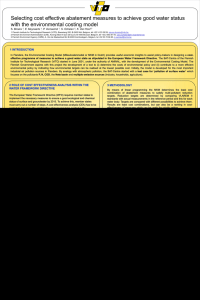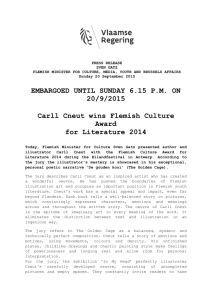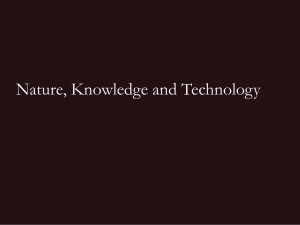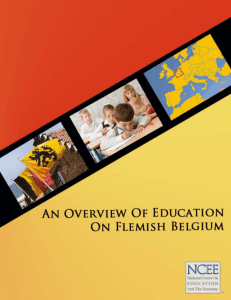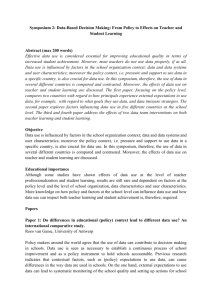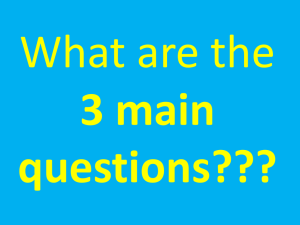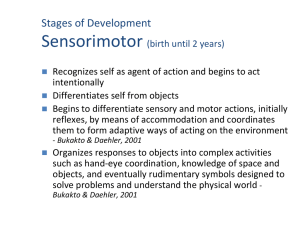Mieke De Schoenmakere
advertisement
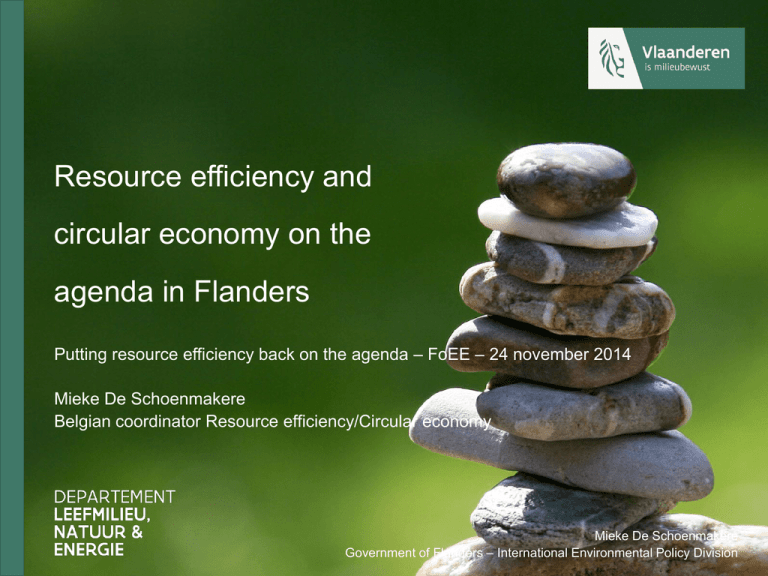
Resource efficiency and circular economy on the agenda in Flanders Putting resource efficiency back on the agenda – FoEE – 24 november 2014 Mieke De Schoenmakere Belgian coordinator Resource efficiency/Circular economy Mieke De Schoenmakere Government of Flanders – International Environmental Policy Division Is resource efficiency slipping off the agenda? It shouldn’t be! Roadmap Resource efficiency = wide range of areas covering a Confronted with many problems But also a lot of opportunities at environmental and at economic level Through resource efficiency and circular economy Is resource efficiency slipping off the agenda? Who is responsible for it? EU? MS? Business? NGO’s? Consumers? … Shared responsibility! Complicated issues ask for a mix of solutions at different levels Circular economy in Belgium The Belgian Presidency of the EU • • Second half 2010 Council conclusions on ‘Sustainable materials management and sustainable production and consumption: key contribution to a resource-efficient Europe’ all key stakeholders, including business, trade unions, scientists/academia, NGOs, as well as national and regional governments and local authorities, with a view to creating an EU platform for the transition to resource-efficient economy cross sectoral approach Roadmap to a Resource efficient Europe • • September 2011 One of the objectives: national strategy on resource efficiency • • Including actions on Circular economy Belgium • Competences spread • • Federal level Regional level: Brussel Capital Region, Flanders, Walloon Region Circular economy in Flanders Action at different levels Legislation: transposition of the Waste Framework Directive (2010) from ‘Waste decree’ to ‘Materials decree’ from ‘Waste hierarachy to ‘Materials hierarchy’ = result of transition that started years befor Action Plan: Flemish Materials Programme http://www.vlaamsmaterialenprogramma.be/ (English version of the brochure is available) Circular economy in Flanders(2) • People, profit, planet approach - economic, ecological and the social dimension. • Focus on cooperation and sharing responsibility: • Government as facilitator • industry • science and knowledge institutes • civil society. • Experience in Flanders so far: RE/CE has helped to create an understanding between societal actors that we are tackling the same challenge. The Flemish Materials Programme • Business world, authorities, knowledge institutions and civil society • • • join forces and combine ambitious long-term development, policy-relevant research and concrete actions. respectively done within • Plan C (a transition network) • SUMMA (a policy research centre) and • an operational plan with 9 levers and 45 priority and concrete actions. The Flemish Materials Programme: 9 levers Flemish Materials Programme: specific sector Example: Critical metals Content • End-of-life vehicles: • 500 000 cars exported / year from Port of Antwerp for second or third life in developing countries • Are we responsible for ESM end-of-life in developing countries? • What about loss of critical metals due to substandard recycling techniques in developing countries? • WorldLoop for cars: • setting up local collection and recycling facilities based on Flemish know-how • shipping hazardous elements + parts needing high-tech treatment (e.g. printed circuit boards) back to Flanders Flemish Materials Programme: specific sector (2) Example: Critical metals Bottom-up / Top-down: available high-end recycling technology / safeguarding environmentally sound management & critical materials stocks Transition steps towards a circular economy: • Emerging business by combining beginning & end value chain • Public-private participation • North-South win-win The Flemish Materials Programme: examples • Better cooperation • Symbiosis project • Smart investments • Materialsscan • Sustainable design • • • Eco-design in higher education SIS toolkit Ecolizer Materialsscan – How does it work? Overview material use: kg and € • Lost costs become visible > waste costs • Simulations on cost savings • Scan is for free • More information (only in dutch): www.materialenscan.be • Materialbalance in permit ‘omgevingsvergunning ‘ from 2016 onwards Materialsscan – Successes and barriers Successes: 30 scans executed, 35 scans in progress Broad range: Building-, wood-, plastic-, textile-, metal- and foodsector • New insights at companies • Opportunities working together with other companies • • Barriers: • • • • • • Finding the right person The right scope of scan Difficult transfer of information from company to scanner (kg and €) SMEs often don’t see added value > too much time Other priorities No interest > we don’t have waste Symbiosis Exchange of materials, energy, water, infrastructure, … , between companies Need of cooperation knowledge- and research institutes (better coordination design and end of life phase) Strong link with materialsscan What is (im)possible when it comes to high qualitative exchange of secundary materials and resources? EHE Kit – SIS Toolkit – Ecolizer 2.0 Questions? Mieke De Schoenmakere mieke.deschoenmakere@lne.vlaanderen.be Thank you for your attention!

